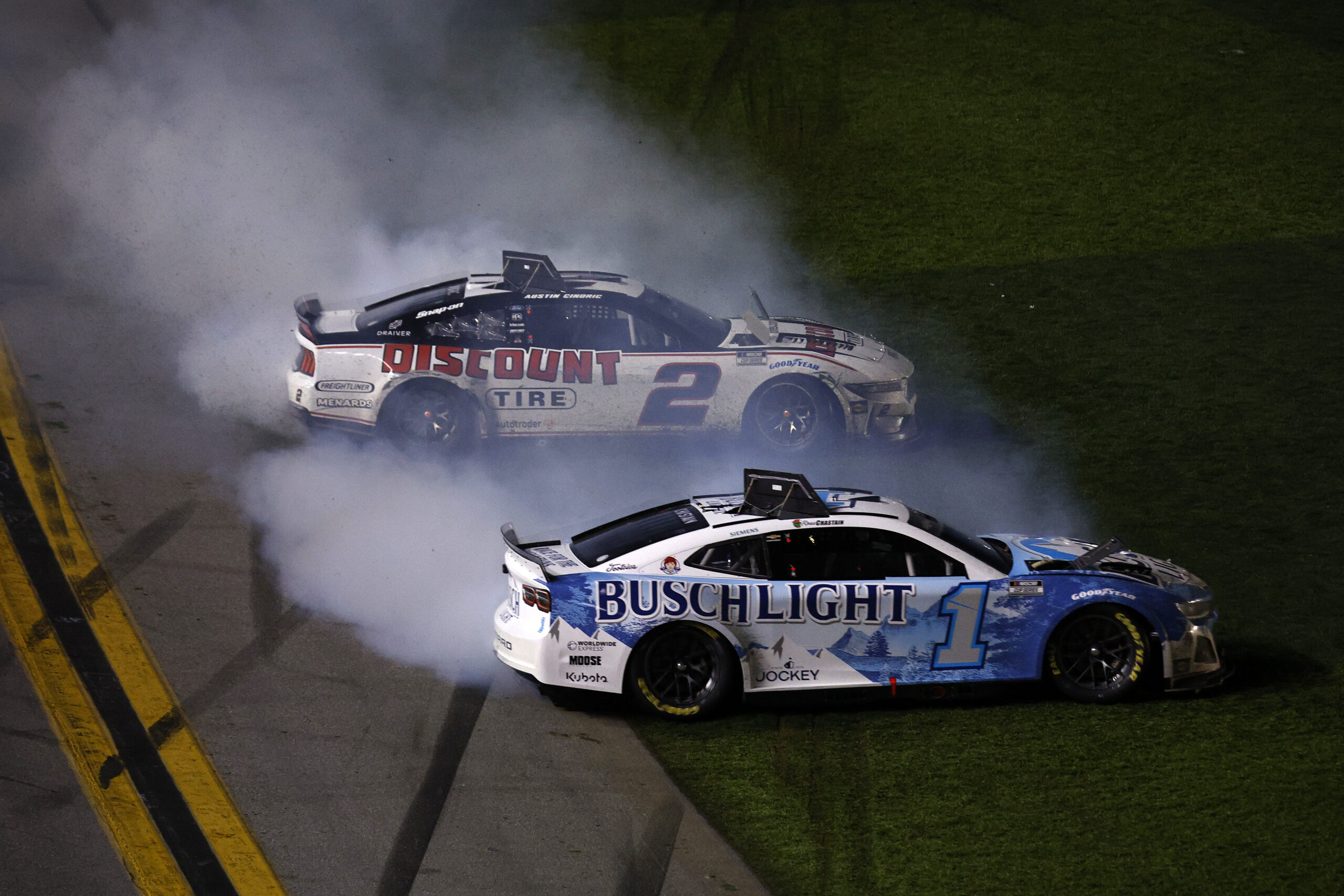
Whenever a NASCAR stock car is sent into a backward spin, fans may see pieces of bodywork sticking up on top of the car. These are roof flaps, and they are one of the most critical safety innovations NASCAR has implemented in recent years. Here is everything you need to know about roof flaps.
In the late 1980s, NASCAR had a problem. The high speeds at superspeedways at Daytona and Talladega would often cause cars to go airborne when being spun around. This reared its’ ugly head at Talladega in 1987 when Bobby Allison flew into the catch fence in a horrifying accident.
The next year, NASCAR implemented carburetor restrictor plates at superspeedways to keep the speeds down. Many felt this could solve the flying cars problem, but, in the first restrictor-plate race of the 1988 season, Richard Petty flew into the catch fence, as his car went into a series of sidewinders.
If NASCAR wanted to keep cars on the track, they needed to do more. In 1994, they came up with a solution, roof flaps. Roof flaps have been required in the sport ever since, and an additional flap was added on the bottom of the car at the back of the rear diffuser when the Next-Gen car was introduced in 2022.
In recent years, roof flaps have helped keep more cars on the ground. Cars will often go slightly airborne only for the roof flaps to push the car back down to the surface. How do these things work?
When a car turns around backward, air can get caught underneath the car, pushing it up into the air. Roof flags change the airflow over the car, which pushes the car back down onto the racing surface. Chris Rice in the video above compares it to an airplane wing while landing. The rear bumper flap functions to keep air from getting underneath the car.
It’s a similar concept to “Downforce” on a Cup Series car. Aerodynamic pieces like the rear spoiler force the air upwards, which pushes the car further into the track. The roof flaps do the same thing, albeit only when the car turns around backward.
Rice also mentions the tethers on the roof flaps, which keep the flap from flipping all the way open and back on the roof. Being at a roughly 90-degree angle means maximum force is being placed on the car, pushing it downward.
While roof flaps have absolutely helped NASCAR, they do not always keep cars from flying through the air. During the Car of Tomorrow era, for example, the rear wing on the car caused cars to fly when turned around backward, and the crash below is one example. NASCAR later did away with the wing and gave teams a traditional rear spoiler.
During the Next-Gen era, flips have also happened. This can be at least partially blamed on the underwing of the ar, which is a smooth surface. Once enough air gets underneath it, the car will flip no matter what. Ryan Preece’s flip at Daytona is one such example.
All that being said, roof flaps have been a net positive for the sport, and it has saved plenty of drivers from wild flips that could bring drastic consequences. The roof flaps are one of the most important safety innovations in modern NASCAR.